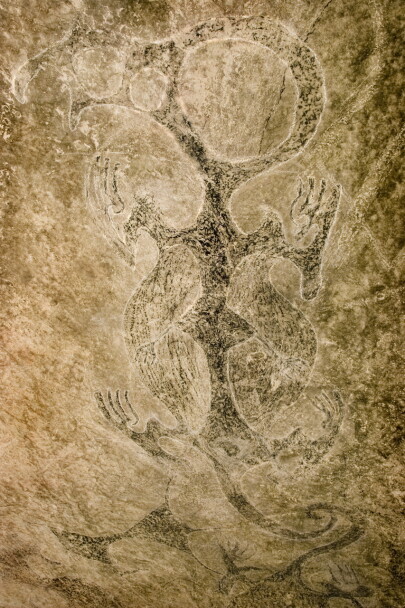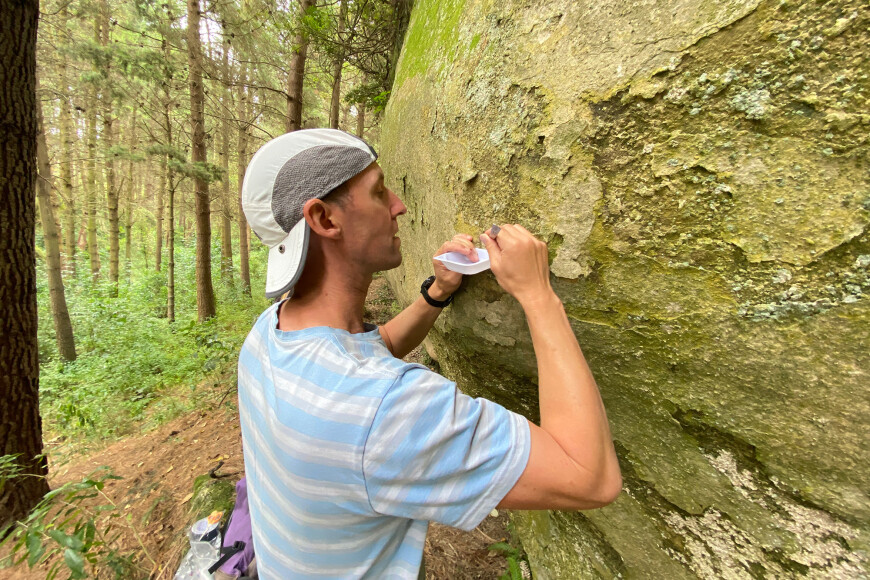
Ancient rock art at Opihi. Image: Amanda Symon, Ngāi Tahu Māori Rock Art Trust
The project will investigate rock art (tuhituhi o neherā) – an ancient art form found in more than 900 caves and rock shelters across Aotearoa New Zealand, created by generations of Māori since the first voyagers arrived more than 700 years ago. To date, most Māori rock art has been recorded in Te Wai Pounamu – the South Island.
The lead investigators will collaborate with a range of experts in mātauranga Māori, archaeology, palaeoecology, and cutting-edge technologies to study Māori rock art and learn more about the original artists, their subjects, and their methods and tikanga (cultural protocols). They will also seek to glean new knowledge about our changing ecosystems from the rock art and address degradation by biological contaminants.
The researchers will analyse palaeoecological evidence such as ancient DNA to reveal changing patterns of vegetation and microclimate at the sites of rock art over many years. At the same time, they will analyse how rock art is being degraded by physical and biological processes. Water and microbes such as algae, lichens, bacteria, and fungi are destroying many paintings, and the remaining examples of tuhituhi o neherā are at risk of being lost without intervention.
The research team will collaborate with international experts on the analysis and restoration of ancient rock art, allowing the team to select conservation methods that will be appropriate in a local context. They will seek ways to prevent microbial colonisation and erosion of rock surfaces, to prevent loss of the artwork, and protect this cultural heritage for generations to come.
The researchers will non-invasively analyse in-situ art, as well as fragments and samples from museums and other collections, using non-contact spectroscopy to understand how ancient pigments were created and where the ingredients were sourced.
In parallel, Ngāi Tahu artists will collaborate with scientists to ‘reverse engineer’ the recipes for rock art paints, based on both tribal knowledge and the results of scientific analysis, helping to rejuvenate traditional knowledge and practices.
Information from archives and museums, and from descendants of the original artists, will also be collated by the researchers, some of whom are custodians of Māori traditional knowledge.
The research will enable Māori to reconnect with the taonga created by their tūpuna (ancestors). It will also be valued by many others – for example, Tourism New Zealand has noted an increase in international visitors who are seeking a deeper and more authentic engagement with Māori culture and heritage, and who will value opportunities to view these windows into the past and to connect with contemporary art that revitalises the artform.

Dr Phil Novis collecting a sample at a rock art site. Image: John Hunt

